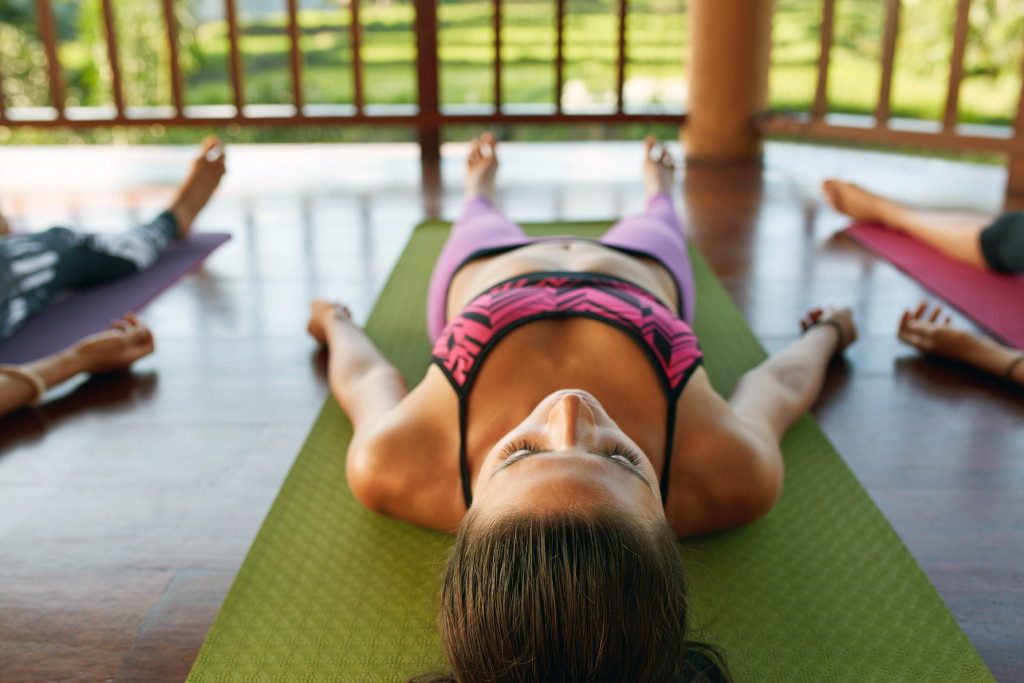Just relax. Diane Feliciani remembers hearing those two words again and again during her own journey with infertility.
“I honestly thought I was relaxed but at the same time had no idea that there were ways in which you can make yourself relax,” she explains. “I also thought it was just a platitude that people said when they didn’t know what else to say.”
Diane began practicing yoga over 15 years ago, found the mindfulness so addictive that she became a Registered Yoga Teacher a few years later, and is now a member of the Calm Waters Holistic Healing team. Here’s a chance to learn about her and, why women with infertility should consider practicing yoga.
What do you enjoy most about yoga?
At first, I couldn’t quite put my finger on what kept bringing me back, but I finally noticed that practicing yoga requires presence and mindfulness, and presence allows for relaxation. So ultimately it was the relaxation that kept me coming back for more.
Why does the program at Calm Waters include yoga?
The Mind/Body Fertility Program at Calm Waters is modeled after Dr. Alice Donar’s program in Boston. As the Director of Integrative Care at Boston IVF, and Associate Professor at Harvard Medical School, Dr. Domar has conducted numerous research studies looking at the relationship between stress and fertility. Numerous studies have shown that decreasing stress may increase your chance for a successful pregnancy.
Why did you decide to join Calm Waters?
First, having gone through infertility myself, I knew how this program could help couples and only wished that I had been given the opportunity to learn about relaxation during the time I was trying to conceive. I had not yet discovered yoga! Second, I worked with Nancy for many years and watched her teach. I knew instantly that she would do an outstanding job delivering the content to the women and couples as well as bring her big heart to it.
My motivation simply comes from knowing this will help women and couples.
Share a little about the type of yoga you teach in the Mind/Body program at Calm Waters.
First, we do gentle movement before practicing restorative postures. Restorative yoga allows the body to elicit the relaxation response by supporting the body with props (blankets, blocks, etc.) in a pose. Each pose is held for about 15 minutes. The mind stays quiet while in the pose through gentle attention to the breath. In addition, the poses will allow for openings in the body that allow energy and blood flow to move through the body and into key areas. In general, yoga increases circulation to the body, builds strength, stamina and teaches relaxation. I also teach a couples class which is fun and gentle. The primary purpose of this class is for the couples to touch one another in a light-hearted and fun way.
Can restorative yoga help me control negative thoughts?
It can be very hard to stop yourself from having regretful thoughts about what has happened in the past or fearful thoughts for what might happen in the future. However, dwelling on “what if” and “if only” types of thoughts can lead to anxiety and/or depression. When you are truly present in the moment, you cannot simultaneously let your mind dwell on the past or the future. Practicing yoga, meditating or simply focusing on your breathing helps you stay in the present moment.
Attention to the breath is the cornerstone for any yoga practice. Paying attention to the breath helps to anchor you in the present moment and living in the present moment is the only antidote to stress.


0